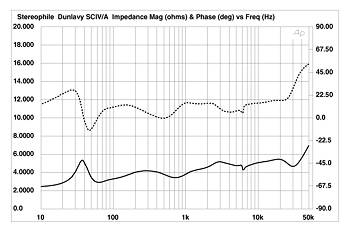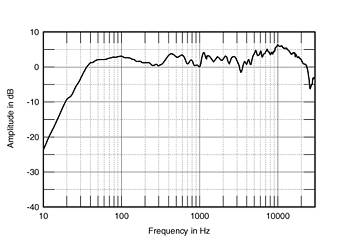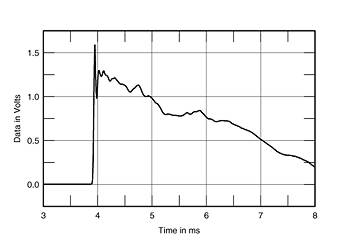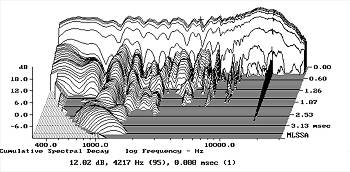Answers are inline preceded by **
thoughts & question please X :
if first order, does the H5 of the RS225 not a problem as well as the little coqueterie of its high-end for the mid/tweet band (will this coqueterie low enough ? to rephrase : we need flat but also very low distorsion beyond the 2 octaves of the XO ( and some claims for almost 3 octaves) ?
** The RS225-8 has a breakup at 7kHz and this can be attenuated with notch filter effectively as I have done in my 10F/RS225 FAST. It is otherwise one of the flattest response, widest bandwidth woofers available at any price by any brand. Cost no object. If you can find me a flatter, wider band, lower distortion 8in woofer with +/-7mm Xmax, please let me know.
Does the important offset recess of the Harsch XO will not introduce too much cabinetry offset between the mid and the tweeter, so all sort of diffraction made passively?
** If you use the WG300 waveguide and 3.5kHz XO, the delay is perfectly matched and no cabinet setback needed as I have shown in my PTT6.5/RST28F-WG300 Harsch XO TL speaker.
How 's the vertical lobbing and soundstage with a 5000 hz XO (we are very far of the theoric 1/4 WL).
** It’s not a point source so vertical lobing will always be ugly. You need a coaxial or synergy horn to get around that one. Or use a full range without tweeter to get around that one and have no dome tweeter highs. A 5MR450NDY has 95dB sensitivity and can go 400Hz to 13kHz. Enough for many people. However, I generally keep my head at the same level when I listen to music, Beavis and Butthead style headbanging, notwithstanding. 🙂
Always asked myself, cause my understanding is Dunlavy was indeed applying very high crossover point between the tweeter and the mid... soundstage was fantastic from my memory !
** I have not had a chance to hear one in person but would love to one day.
I'm always fascinated by the easy way of electronic delay with active filtering, what a great thing, I really have to try one soon day.
** I started with DSP and still use them. But for my best speakers, I like how passive XO’s do not add noise or digital hash or as you say, “coquetry” to the sound, and IMO, can sound better when done right, and I can swap out amps (I have many on rotation) so DSP is not suitable for that kind of swapping all the time.
Last edited:
Very usefull X, many thanks for your answers 🙂
Well for me, I like passive because I find todays dac to be very good, so I am always puzzled by all the process of active though if quality is good enough why not. It just seems to me it s very expensive if I wqnt to approach what I have with a simple good dac.
Well for me, I like passive because I find todays dac to be very good, so I am always puzzled by all the process of active though if quality is good enough why not. It just seems to me it s very expensive if I wqnt to approach what I have with a simple good dac.
Last edited:
This is the SC1 and seems to be the midrange and tweeter from the SCIV:
Dunlavy Audio Labs SC-I loudspeaker Measurements | Stereophile.com
Note the high Fc and the lack of baffle step. It seems to me that for a
sealed box system they needed more volume displacement to get a
reasonable MaxSPL. Those small Vifa drivers only have 3mm Xmax - not
much at all.
Dunlavy Audio Labs SC-I loudspeaker Measurements | Stereophile.com
Note the high Fc and the lack of baffle step. It seems to me that for a
sealed box system they needed more volume displacement to get a
reasonable MaxSPL. Those small Vifa drivers only have 3mm Xmax - not
much at all.
Nonsense.xrk971 said:It’s not a point source so vertical lobing will always be ugly. You need a coaxial or synergy horn to get around that one.
True to Dunlavys ideas, the baffle will be stepped and drivers time aligned, that is just a must in all speakers i build, the benefits are so good that i realla cant understad why people dont do it...
Because there are now affordable technologies available that can create time alignment and with a lot less diffraction. Iow: DSP.
This is the SC1 and seems to be the midrange and tweeter from the SCIV:
Dunlavy Audio Labs SC-I loudspeaker Measurements | Stereophile.com
Terrible polar response.
So how do you keep the vertical interference low between tweeter and mid then?
Keep the distance between mid and tweeter as short as possible.
More than 1/4 the wavelength of the crossover frequency causes a large (audible???) reduction in vertical frequency response at that frequency.
Or use very steep crossover slopes. No common output of both mid and tweeter, no interference.
Nonsense.
Your wrong, just look at the stereophile measurements, terrible vertical frequency response.
Designed as a "nearfield reference monitor"
Nearfield and reference monitor in the same sentence 🙄
Mtm has a squirly vertical response, is it audible at 10’ ?
My buddy called it “listening to music down a pipe.”
I expect the closer crossover point to the total drivers/tweeter height, the better.
I don’t think nearfield would matter, but it may be sensitive to ear height though....
My buddy called it “listening to music down a pipe.”
I expect the closer crossover point to the total drivers/tweeter height, the better.
I don’t think nearfield would matter, but it may be sensitive to ear height though....
I think the Fractal Array from bbutterfield could be a valid option, although you'd need DSP to make it act as linear phase (or actually minimum phase throughout it's bandwidth) similar to Dunlavy's goals to get similar time coherency. The crossovers are steeper, but it's vertical behavior is excellent.
My own straight arrays are partly inspired by Dunlavy, but are of a different breed as well.
My own straight arrays are partly inspired by Dunlavy, but are of a different breed as well.
Last edited:
Terrible polar response.
And this is a surprise?
You just said DSP for improved polars but this is passive.
I'm surprised that Dunlavy spaced the mids so far apart, don't see
any good reason for it other than to leave space for felt. Certainly
he understood the consequences, wondering what he was thinking.
Last edited:
The Dunlavey used 1st order crossovers which require drivers that are inherently flat response and very wide band. You want smooth response at least 2 octaves beyond XO frequency. One thing to try is use a passive Harsch XO between the midbass and tweeter. This allows a 2nd order for tweeter to give it more protection from burning out. If you cross high like 5.5kHz, the physical setback requirement is decreased.
I would use 4x RS225-8 in series parallel (400Hz) and two PTT6.5 mid bass and a single RST28F in WG-300 waveguide (5.5kHz). I know the XO between PTT6.5 and RST28F works already.
Overall sensitivity after baffle step is about 90dB 2.83v 1m. The PTT6.5 has superb mid range clarity.
I like this idea but I'd probably use RS180p or 150p for the mids to reduce costs.
Harsch between the woofers and mids might also work well.
That particular part of this style of design has always been possible.that can create time alignment and with a lot less diffraction. Iow: DSP.
Read my quoted part a bit more closely.Your wrong, just look at the stereophile measurements, terrible vertical frequency response.
Review of SC-IV/A by Soundstage, they usually provide measurements by the
NRC but not this time:
SoundStage! Equipment Review - Dunlavy Audio Labs SC-IV/A Loudspeakers (2/2001)
NRC but not this time:
SoundStage! Equipment Review - Dunlavy Audio Labs SC-IV/A Loudspeakers (2/2001)
Measurements here:
Dunlavy Audio Labs SC-IV/A loudspeaker Measurements | Stereophile.com
Impedance:

Frequency:

Step Response:

CSD:

Dunlavy Audio Labs SC-IV/A loudspeaker Measurements | Stereophile.com
Impedance:

Frequency:

Step Response:

CSD:

Last edited:
@xrk971 Did you notice that large CTC distance for the mids in this design? Any idea what
might have been the reason? Seems like they could have been 2-3" closer.
I saw JA's measurements but it would have been nice to compare to some done at the NRC.
might have been the reason? Seems like they could have been 2-3" closer.
I saw JA's measurements but it would have been nice to compare to some done at the NRC.
- Home
- Loudspeakers
- Multi-Way
- Designing/creating a Dunlavy type speaker from the ground up